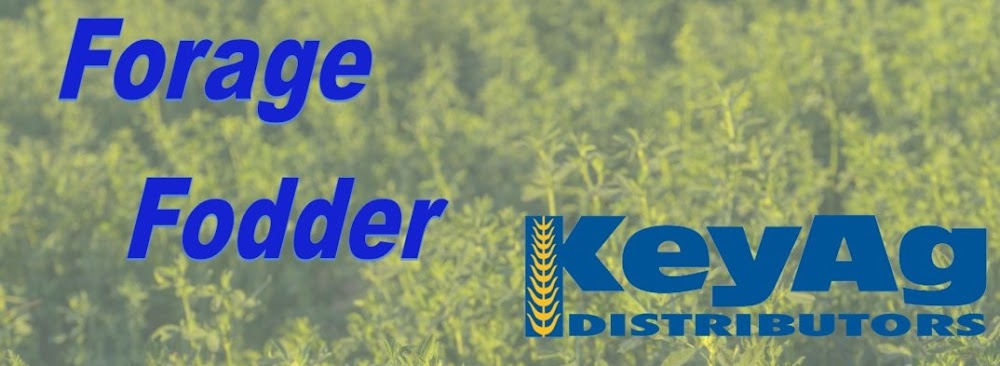Monday, July 31, 2023
State-by-state hay summary
Colorado—In the July 20 report, compared to last report, trade activity and demand moderate. Hay trades are starting to gain momentum as first cutting gets wrapped up across the state. Areas that have received a lot of rain since mid May have created challenges in putting up hay that will test. Later cut alfalfa with low test is going to be moving into the grinder markets. Producers have struggled to put up hay without any rain on it.
Missouri—In the July 20 report, compared to last report, hay demand is good to very good. The supply is light. Hay prices are firm. Rains have continued to fall around the state. Some areas have seen some green appear from the moisture but many areas are going to need a lot more before any improvement will really be seen. Emergency CRP haying and grazing was opened up this week, approximately 58% of the state falls under guidelines that will allow haying or grazing request to be granted. Land owners must contact local FSA offices prior to any activity or to get more information.
Nebraska—In the July 20 report, compared to last report, all bales of alfalfa hay sold unevenly steady. Grass hay and dehydrated alfalfa pellets sold steady. Demand was good for good, green, non-rained on hay with light demand for rain damaged hay. There are several tons of rained on hay from west of Grand Island to Wyoming and sellers are having to sit on that type of hay at this time. Not much good green hay has been produced in this large area, so it has been hard to determine fair market value for the rained-on hay. On a bright note, rain showers have started in some areas in the eastern third of the state allowing producers to cut and bale hay fields that were previously dormant. These July rains have brightened the moods of all dryland crop owners. Tonnage is still rather light in that area, but most producers think they will get at least one more and maybe two cuttings of alfalfa or grass if the rains keep coming.
Oklahoma—In the July 21 report, compared to the last report, In western Oklahoma, trades are slow, and the demand is light. Barns are full or almost full of hay. Compared to last year, there was no hay in these areas. As we look at the central part of Oklahoma, trades are good. Demand is moderate to light demand. Barns are at capacity and need places to store hay. In eastern Oklahoma, trade is good, and the demand is high. Hay is being sold as soon as it is bailed in the field. Drought is in site once again, which is causing the demand to rise. Next report will be released Aug. 4.
Texas—In the July 14 report, compared to the last report, hay prices are mostly steady in all regions. Trading activity was mostly inactive on limited demand. Pasture and rangeland conditions across the majority of the state are still in fair to good condition, with the exception of the central region where extreme heat and limited moisture has begun deteriorating conditions. The southern region finally received some temporary relief from these higher than average temperatures this week and some much needed sporadic rain showers across parts of the southwest, south and southeast. Trading has picked up some as buyers and sellers are trying to negotiate prices for fall contracts, but so far the majority of the hay that is moving is being contracted at lower prices than last years highs. Next report will be released July 28.
South Dakota—In the July 21 report, compared to last report, alfalfa and grass hay steady. Very good demand for grass hay as tonnage was much reduced in the East River area, as the spring was very dry. Good demand for alfalfa, yet there is resistance building from dairy operators as milk prices are greatly tightening their margins. Second cutting of alfalfa saw reduced tonnage, as the drought intensified, rains have now come to these parched areas but in many places it came too late. Corn and soybeans have received enough rain to keep them growing well but the hay crops were not as fortunate. Much cooler weather this week, with temps in the 70s, no rain to speak of and mid 90s forecast for next week will leave all crops in great need of rain.
New Mexico—In the July 21 report, compared to last report, alfalfa hay steady. Trade active, demand good. Alfalfa hay is at 67%
finished with second cutting. Most hay producers in the southern part of the state are finishing their third cutting, 8% of third cut is finished through out the reminder of the New Mexico . The northern part of the state is in the first cutting. According to New Mexico Crop Progress Report by National Agricultural Statistics Service, New Mexico Field Office, hay and roughage supplies were reported as 26% very short, 39% short, 24% adequate, and 11% surplus. Stock water supplies were reported as 40% very short, 21% short, 37% adequate, and 2% surplus.
Wyoming—In the July 20 report, compared to last report, bales of alfalfa sold unevenly steady. Pellets and hay cubes steady. Demand for good, green hay is very good and it has been rather hard to get produced this season. Some areas in the west have had decent haying weather and are trying to finish first cutting of hay this week. Several hay producers might have one less cutting of hay than normal due to the late cutting of first and the frost that will come this fall. Mother Nature is in control and producers do the best they can to work with her in their lively hoods. There needs to be a lot more of good to premium hay produced so people know where to price there tons of rained on first cutting hay. Many contacts are lost in away, as they haven’t produced that type of hay for a very long time. The market will short itself as winter comes along.
Montana—In the July 21 report, compared to last report, The new crop hay market is still trying to establish itself. Local in-state demand is light, while out of state demand remains moderate. Hay sold sharply lower on a few limited sales. Most producers have wrapped up or are just finishing first cutting with a few in eastern and southern Montana starting second. Yields have been outstanding with many 30-40% over last year. As a result hay supplies are very heavy. This has caused some concern as lighter cattle numbers and heavy supplies are pressuring the market lower. Many ranchers state they have put up so much of their own hay they will not need to buy anything this season. Many hay producers have switched to squares as try to make their hay more marketable to buyers outside of the state. Many hay producers are holding asking prices at $200 for squares, but very little has sold.







-page-001.jpg)
-page-002.jpg)
-page-003.jpg)

-page-001.jpg)
-page-002.jpg)
-page-003.jpg)
-page-004.jpg)

-page-001.jpg)
-page-002.jpg)
-page-003.jpg)

-page-001.jpg)
-page-002.jpg)

-page-001.jpg)

-page-001.jpg)

-page-001.jpg)
-page-002.jpg)
-page-003.jpg)
-page-004.jpg)

-page-001.jpg)
-page-002.jpg)

-page-001.jpg)
-page-002.jpg)
-page-003.jpg)

-page-001.jpg)
-page-002.jpg)

-page-001.jpg)
-page-002.jpg)
-page-003.jpg)
-page-004.jpg)

-page-001.jpg)
-page-002.jpg)
